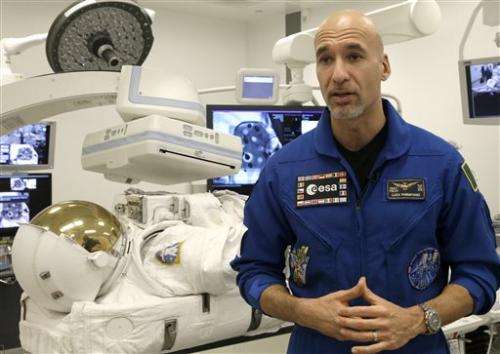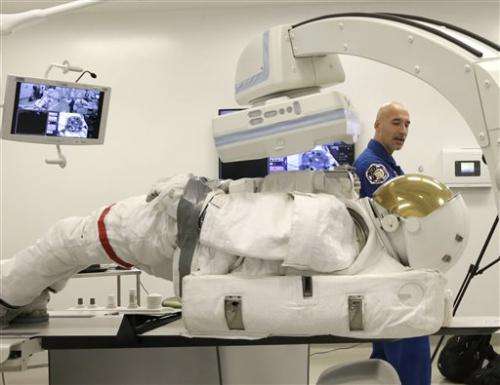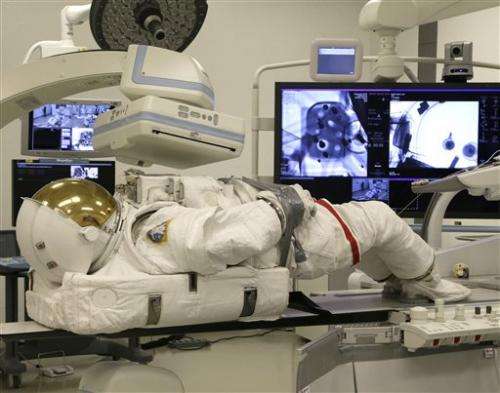NASA and Houston hospital work on spacesuit issue

The empty spacesuit that sat on the operating table in a lab at Houston Methodist Hospital's research institute made for an unusual patient.
The bulky garment ended up in the state-of-the-art research lab after NASA sought innovative ways to pinpoint problems with its spacesuits in the wake of an Italian astronaut nearly drowning in his helmet during a 2013 spacewalk on the International Space Station. It happened when debris clogged a pump mechanism inside his spacesuit.
NASA hopes the advanced imaging equipment in the lab, including a CT scanner attached to a robotic arm, can help it create 3-D pictures of its spacesuits that can be used to better diagnose malfunctions that might happen in the future.
Luca Parmitano, the Italian astronaut who survived the harrowing experience with the spacesuit, said the work NASA and the hospital are doing is a step forward in preventing others from going through what he faced.
"I never thought about seeing a spacesuit lying on a surgeon's table. That is a first for me," said Parmitano, as he stood next to the spacesuit, which was not the same one he wore during the spacewalk.
The imaging technology was demonstrated on the spacesuit during "Pumps & Pipes," an annual conference that brings three of Houston's biggest industries—medicine, energy and aerospace—together to discuss technologies that could be shared by the fields.

Parmitano, an officer in the Italian Air Force, described to an audience at the event how the water began building behind his head in his helmet and later started to cover his ears, eyes and nose. He said he imagined a newspaper headline that read, "Italian astronaut drowns in space."
Brian Macias, the spacesuit subsystem manager at NASA's Johnson Space Center in Houston, said a fan component that failed during the spacewalk was later examined with X-rays and N-rays, another form of radiography, but this gave engineers limited information.
"It's breaking new ground for us because we haven't used imaging a whole lot in finding out spacesuit anomalies," Macias said. "I see great potential."

During a demonstration Monday at the conference, the robotic arm rotated the CT scanner around the spacesuit's helmet, creating red, black and white 3-D images that can allow engineers to look at the integrity of different components.
Dr. Alan Lumsden, the medical director of the Methodist DeBakey Heart and Vascular Center who led the demonstration, said techniques used in endovascular surgery to examine problems with blood vessels are the same kind that can diagnose future problems with the spacesuits.
"Here is a situation where we are going to use our technology to potentially look at a problem that helps NASA," he said. "We really want to help as much as we can."
© 2014 The Associated Press. All rights reserved.















